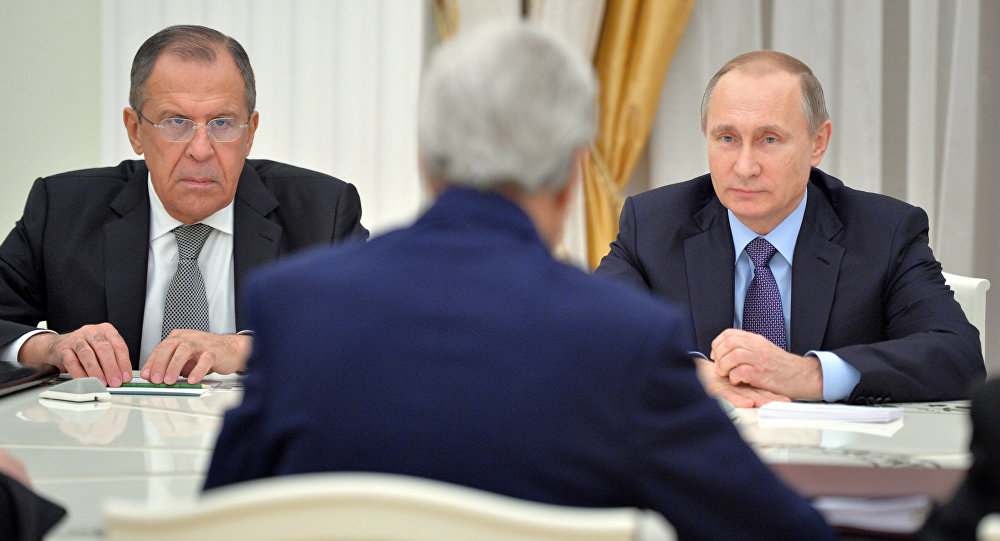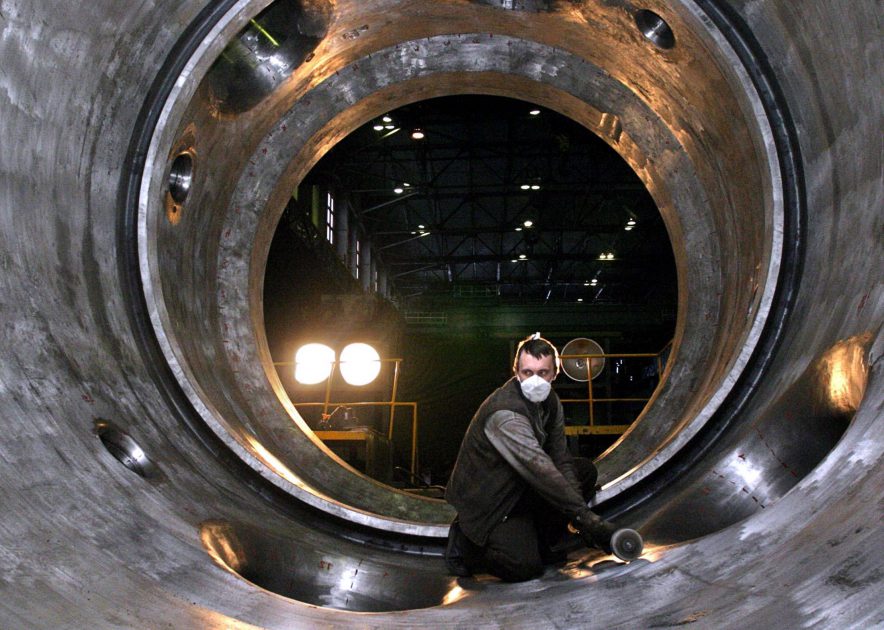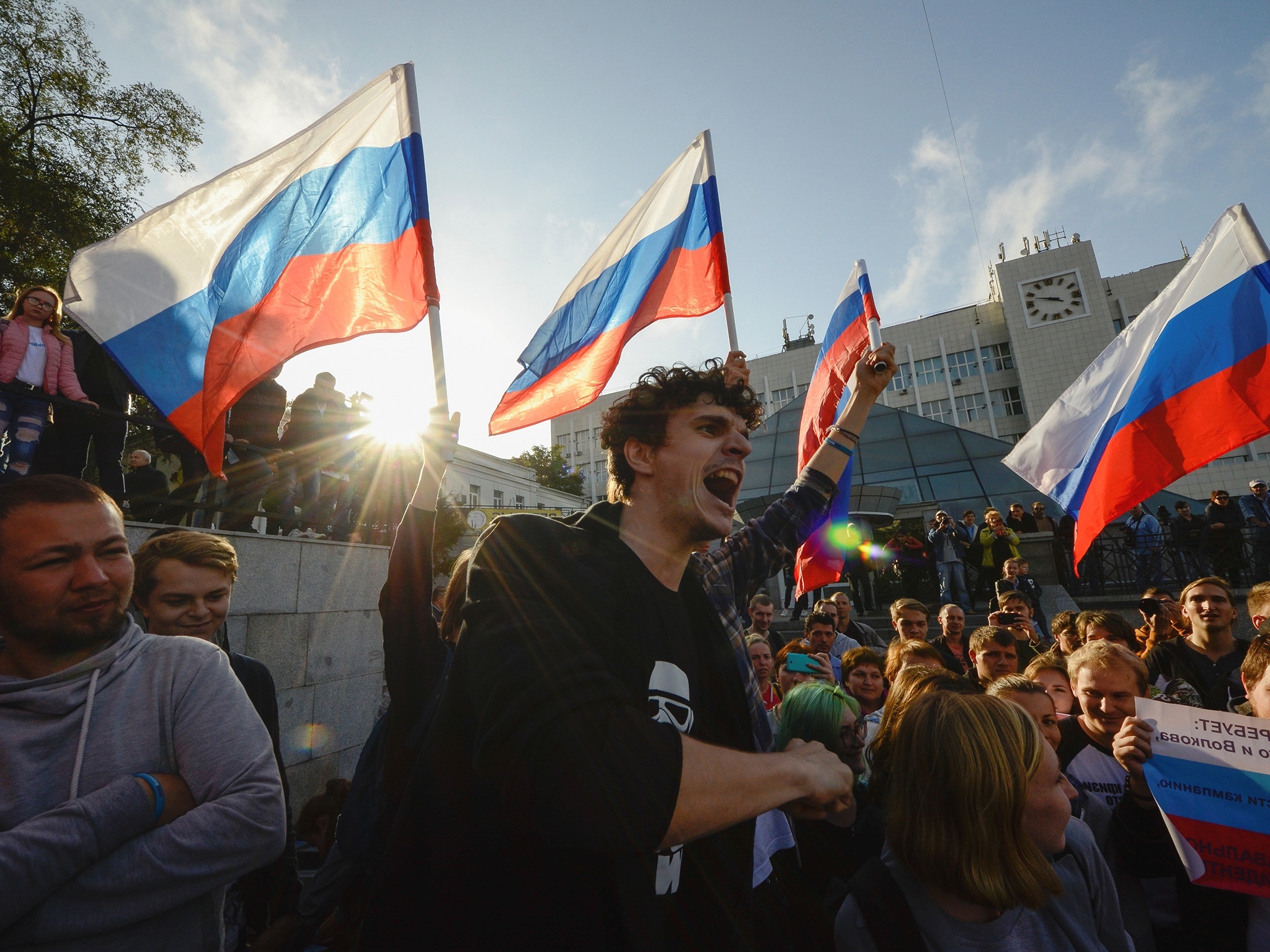
Lawyers may seem an unlikely bunch to go on strike, especially in Russia. Yet, in September and October, lawyers’ associations in several Russian regions (Sverdlovsk, in the Urals, Chelyabinsk, near Kazakhstan, and Karelia, on the border with Finland) called on their court-appointed members to stop working in protest of wage arrears from the Justice and Interior ministries that amounted to up to 225m rubles ($3.2 million).
Though limited to a handful of regions, the protests appear to have been successful: Kommersant reported on 8 November that the Finance Ministry promised full repayment of the debt by the end of the year, in addition to a pay raise for court-appointed lawyers.
[alert type=blue ]Author: Fabrice Deprez is a journalist and contributor to BMB.[/alert]
Protest is a sensitive issue in Russia. In early November, a report by the Moscow-based Center for Economic and Political Reform claimed that the number of protests across Russia had risen 56% over last year, from 284 in the first quarter to 445 in the third. 70% of those protests, the report added, were of a “socio-economic nature”, such as protests against rising utility prices.
These numbers have been interpreted by several pundits as yet another sign that protests, fuelled by falling revenues, mass layoffs, and growing anger towards entrenched corruption have been gaining steam across Russia. However, data from several Russian NGOs paints a more nuanced picture: while protests focused on social issues have become more and more frequent, outright political protests remain rare. Meanwhile, the number of labor protests remains stable, but at a much higher level than a few years ago.
The Center for Economic and Political Reform only started monitoring protests in 2016, and was first focused on labor conflicts (including work protests, mass layoffs, or conflicts due to wage arrears). Comparing data for labor conflicts shows a similar rise in the third quarter of 2016, meaning the rise in protests in 2017 may not be as significant as it first looks.
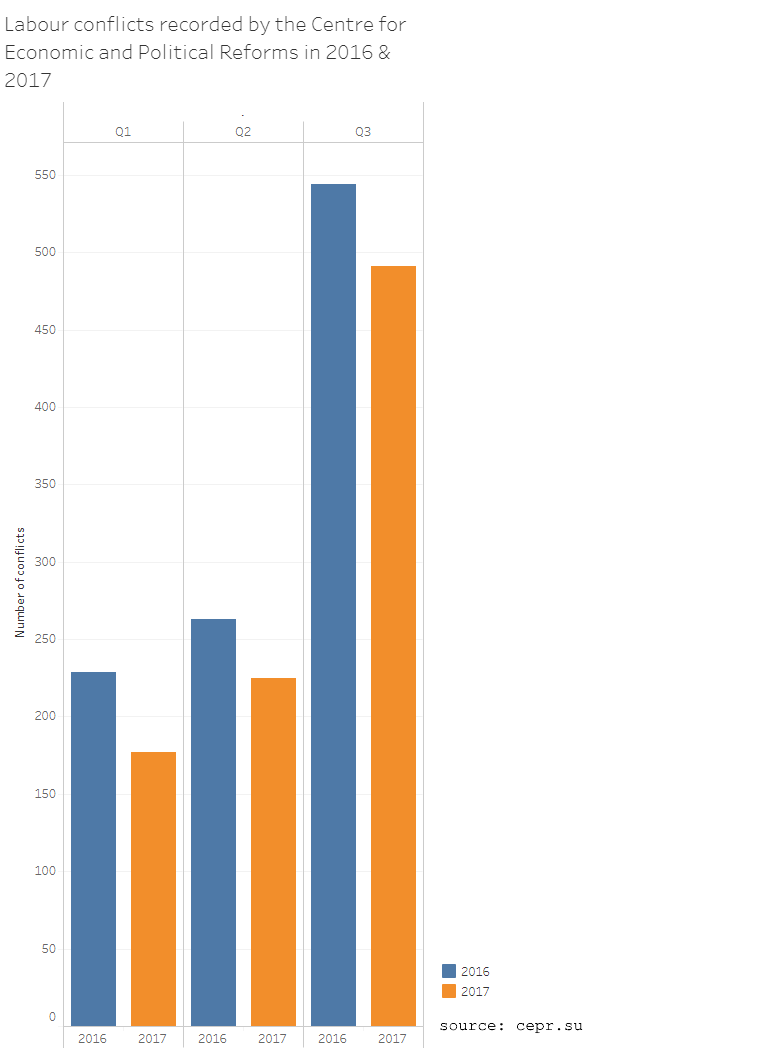
A spokesperson for the Center told Bear Market Brief that they did not have enough data to say whether or not this third quarter rise in both 2016 and 2017 was coincidental, but pointed out that September is traditionally an election period in Russia, which tends to lead to an “escalation of social conflicts”. Kremlin spokesman Dmitry Peskov has also commented on the report, saying the rise in protest activity was likely linked to the upcoming presidential election and therefore “natural”.
The trend likely transcends the electoral calendar, however. The other major source for data on labor protests is the Center for Social and Labor Rights, a Moscow-based NGO for the defense of labor rights. They focus exclusively on work protests, with data going back to 2008.
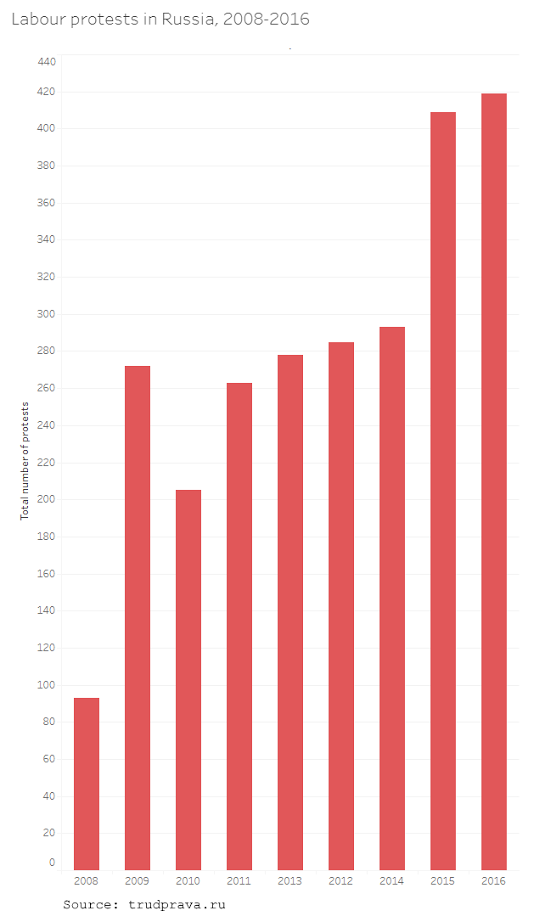
The impact of the 2008 and 2014 economic crises is fairly explicit from the data. The number of work protests has now stabilized at around 400 a year, and will likely be slightly lower in 2017 compared to 2016 (the Center recorded 170 protests during the first half of 2017, against 193 in the same period in 2016).
Rather than a continuous rise, data from the Center for Social and Labor Rights therefore points at a stabilization of work protests at a high level. The Center for Economic and Political Reform indicates a similar trend, reporting 1036 “labor conflicts” in the first three quarters of 2016, and 893 in the same period this year.
But labor protests are only part of the story. In the last few weeks, locals from three regions (the Komi and Tatarstan republics and the Bashkortostan region) held demonstrations to denounceattempts by authorities to reduce the time allocated to the teaching of minority languages in their region.
In local media across the country, reports of protests against rising utility prices, the suspension of transport services, or poor living conditions are easy to find. And, despite a lack of hard data, there are indications that these type of protests, focused on local and social issues, have been rising in recent years.
In early November, a report was released by the Committee on Civil Initiatives, an organization led by former Finance Minister Alexey Kudrin, warning of “heightened tensions” in the regions. According to the report, nine regions were deemed at “high risk of protest activity” in the first half of 2017, while only five qualified as such in the second half of 2016.
Unfortunately, the Committee of Civil Initiatives doesn’t give raw data regarding the number of protests in the regions, but uses a “protest activity” indicator ranging from 0 to 3 points for each region, depending on the size and significance of each protest. This protest score reached 907 points in the first half of 2017 against 733 points in the second half of 2016, indicating a significant rise – and almost double the 2014 score.
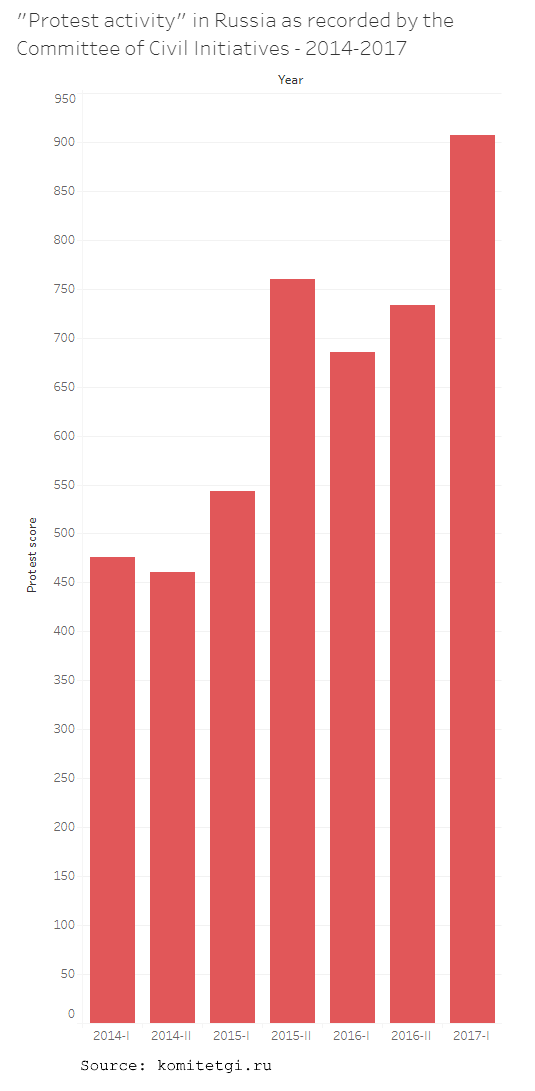
According to the report, this rise in the number of protests is mostly focused on local issues, such as social services, housing, transport, or employment. While the number of anticorruption protests has also jumped – most notably, the March 26th protests organized by activist and would-be presidential candidate Alexei Navalny – political protests with “other themes” are on the decline.
Political protest is, of course, the elephant in the room, and there are indications that the Kremlin is taking the matter very seriously. Agencies ranging from the FSO (the Presidential Security Service) and Rosatom (Russia’s atomic agency) are said to be involved in monitoring the “protest mood”, while the ability to deal with protests and social discontent has been deemed deemed one of the key tasks for the new governors. And though polls have recorded barely any movement in Russians’ willingness to go out on the street, the rise in dissatisfaction is much more obvious.

Why isn’t this rise in dissatisfaction being translated into more political protests? It could be that the Kremlin successfully painted a red line between social and political protests, with only the former deemed acceptable. Russians may therefore be channeling their dissatisfaction into protests focused on specific issues, where the accountable institutions remain local – municipal governments, police departments or governors. This is tied into the classic “good Tsar, bad boyars” trope, with Putin largely seen as the potential solution rather than the problem.
The 26 March anticorruption protests as well as religious protests against the movie ‘Matilda’ did show that political protests on a federal scale remain viable (though not necessarily successful: both protests failed to achieve their stated goals). But these nation-wide protests were sparked by very different actors than those who usually initiate local demonstrations: opposition leader Alexey Navalny for the former, and ex-Crimean procurer turned Duma deputy and religious crusader Natalya Poklonskaya for the latter.
As Russia is gearing up for Vladimir Putin’s probable next mandate, a key question is whether economic stagnation and uncertainty surrounding his future will contribute to blurring the line between social and political protests: this is likely what Alexey Navalny attempted when he assisted protests in Novosibirsk against the rise of utility prices. For the Kremlin, anticorruption protests across 80 Russian cities was embarrassing. But a demonstration held on the same scale by pensioners, a core electorate of Vladimir Putin with bleak economic prospects, would be a much bigger problem.
[toggler title=”Source” ]This article was originally published by Bear Market Brief.[/toggler]


